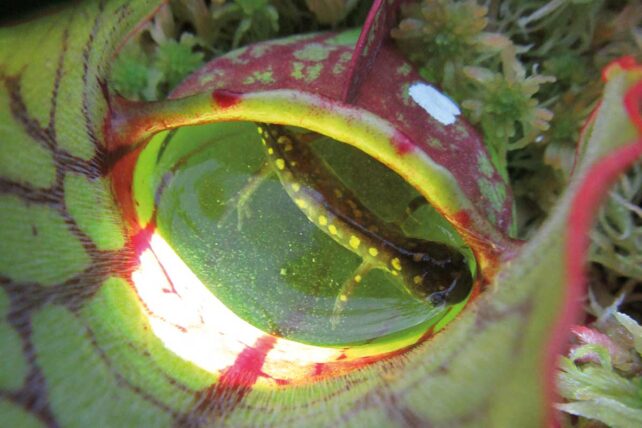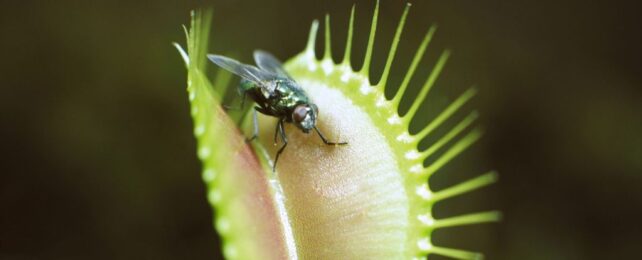On a long walk in the summer of 1860, Charles Darwin first noticed a peculiar phenomenon among plants that still puzzles scientists to this day.
On the English heathland, there was a common sundew (Drosera rotundifolia) with a whole bunch of insects stuck to its leaves.
That chance encounter started Darwin on a 16-year-long endeavor to prove that some plants could eat animals, dissolving their proteins with enzymes and absorbing the nutrients for growth.
At first, even his wife had trouble believing him.
"At present, he is treating Drosera just like a living creature, and I suppose he hopes to end in proving it to be an animal," she wrote to a friend at the time.
Today, naturalists no longer dispute the existence of carnivorous plants, but that doesn't mean we fully understand how these curious lifeforms evolved to attract, catch, retain, and digest animal prey, especially large prey like amphibians and small mammals.
Carnivorous plants currently come in a great diversity of shapes and sizes, including corkscrew traps and pitfall traps. Some, like Drosera, use simple adhesive traps to catch insects, while others, like the infamous Venus Fly Trap, have evolved more complex 'snap-trap' prisons for their prey.
Recent genetic research suggests snap-traps initially evolved from 'flypaper' traps in at least three or four clades independently.
In 2018, a study found evidence that carnivorous plants evolved at least 10 times independently within flowering plants. Over and over, unrelated plants seem to repurpose similar herbivore genes to better suit a predatory lifestyle.
"These plants have a genetic tool kit, and they're trying to come up with an answer to the problem of how to become carnivorous," explained University of Buffalo biologist Victor Albert in 2017.
"And in the end, they all come up with the same solution."

Carnivorous plants tend to grow in nutrient-poor areas, like bogs and wetlands, and a single decent-sized insect can provide a Venus flytrap with enough phosphorus and nitrogen to keep going for weeks.
So we have their motivation for creating such complex and energy-intensive traps, and new genetic studies have also started unraveling the how.
It turns out they've co-opted part of a universal plant defense system that uses jasmonate chemicals. Most plants use these to warn each other of danger, but, as we discovered in 2019, fly traps are using them to recruit the enzymes that break down their prey and to call in nutrient transporters.
But this method is only seen in one group of these vegetative predators. Butterworts do not use the same system, and many other species' strategies remain secret.
Until scientists better understand the trade-offs of botanical carnivory, the reason for the evolution of so many animal-hungry plants across the world will likely remain elusive.
And there's no time to waste on future research. In 2020, researchers estimated that a quarter of all known carnivorous plants are at risk of extinction.
If we don't probe their mysteries now, we may never get the chance.
